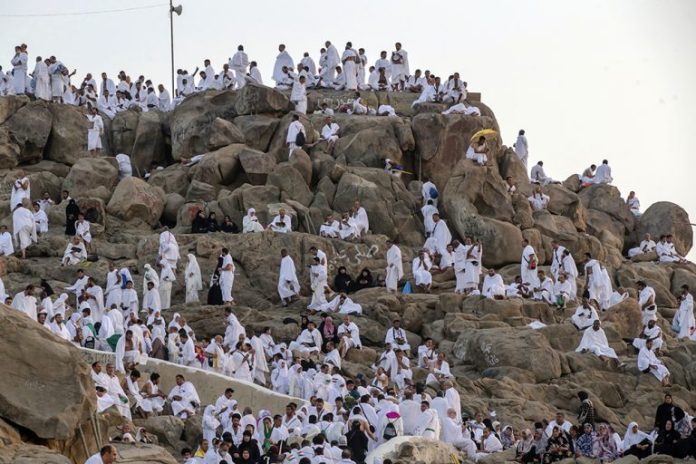On Saturday, over 1.5 million Muslims converged at Mount Arafat, braving extreme heat for the climax of the annual Hajj pilgrimage. Clad in white, worshippers began arriving at dawn for the most challenging day of the rites, ascending the rocky, 70-meter hill where Prophet Muhammad (Peace Be Upon Him) delivered his final sermon.
“This is the most important day,” remarked 46-year-old Egyptian Mohammed Asser, who arrived prepared with a list of prayers, including supplications for the Palestinians. “May God help them,” he added earnestly.
This year’s Hajj unfolds against the backdrop of conflict in Gaza, triggered by escalating tensions between Israel and Hamas. The situation has claimed numerous lives and heightened geopolitical sensitivities.
Despite Saudi Arabia’s directive against political activities during Hajj, some pilgrims expressed solidarity with Palestinians through vocal support and prayers. Iranian Supreme Leader Ayatollah Ali Khamenei emphasized global support for Gaza’s resilient populace.
The pilgrimage, one of the world’s largest religious gatherings, is increasingly impacted by climate change, with regional temperatures rising steadily each decade, as highlighted in a recent Saudi study.
The rituals, spanning at least five days and primarily conducted outdoors, pose significant challenges in the scorching heat. Pilgrims are urged to stay hydrated and protect themselves from the sun, often resorting to umbrellas due to prohibitions on wearing hats for men.
Despite the hardships, Hajj remains a cornerstone of Islam, mandatory for those with the means to perform it at least once in their lifetime. The pilgrimage is a vital source of spiritual fulfillment and cultural identity for Muslims worldwide.
After Mount Arafat, pilgrims will proceed to Muzdalifah to collect pebbles for the symbolic “stoning of the devil” ritual in Mina on Sunday. The Hajj pilgrimage is also an economic mainstay for Saudi Arabia, bolstering its religious tourism sector amid efforts to diversify its economy.
Last year, the kingdom welcomed over 1.8 million pilgrims for Hajj, with a significant majority arriving from abroad. Additionally, Saudi Arabia accommodated 13.5 million Muslims for Umrah and aims to expand its religious tourism to accommodate 30 million pilgrims annually by 2030.
Hajj not only reaffirms Saudi Arabia’s custodianship of the Two Holy Mosques in Makkah and Madina but also underscores its pivotal role in the global Islamic community.








